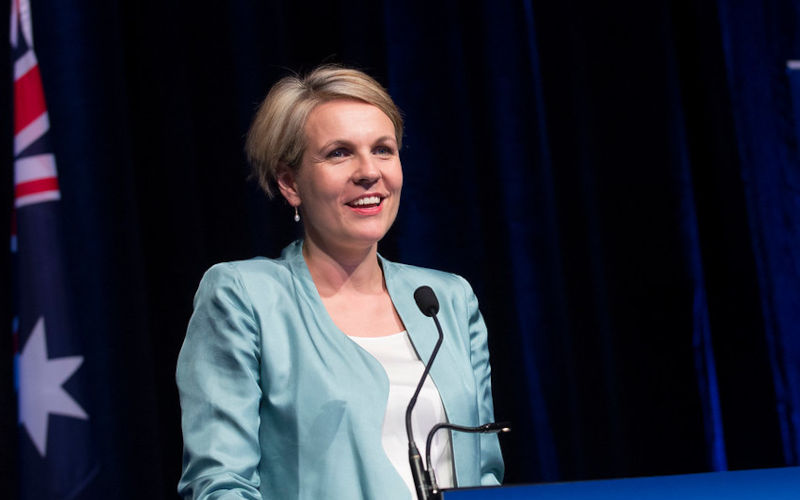Labors environmental denialism
December 27, 2022
Australians are getting a clearer idea of the Albanese governments approach to the environmental crisis and it amounts to the maintenance of its long-held environmental denialism.
Denialism is the rejection of strong evidence when it doesnt suit your ideology or political agenda. Evidence has accumulated for at least 50 years that economic growth (GDP) and population growth are the main drivers of environmental decline. Neither are addressed in Environment Minister Tanya Pliberseks recent announcements.
First the good news
On 19 July 2022, Plibersek gave a speech at the National Press Club where she publicly released the five-yearly State of the Environment Report (dated 2021) and summarised her reading of it. Our natural environment is poor and getting dangerously worse. She correctly said that what our environment really needs is a changed system and without structural reform, well be resigning ourselves to another decade of failure.
She said we need better laws, better technology, better planning, and a circular economy That means promoting recycling, reusing, and repairing as much as possible. She omitted to highlight that the biodiversity section of the report said:
“Population growth contributes to all the pressures described in this report. Each person added to our population increases demand on natural resources to provide food, shelter and materials for living.”
“Direct threats to biodiversity associated with human activity include those related to accommodating a growing population in cities and regional areas, with associated urban development and infrastructure for transport, power and services. Pressures also include disturbances associated with recreation and tourism, hunting, fishing and collecting, which can impact biodiversity in even the most remote areas of Australia.”
On 4 October Plibersek released a threatened species action plan. The action plan has ambitious targets, which include preventing any new extinctions of plants and animals. Her government would spend $224.5 million to take action.
On 25 November, Plibersek announced the formation of a new Ministerial Advisory Group on the Circular Economy that has been tasked with guiding Australias transition to a circular economy by 2030. The new expert group will look at how products are designed, manufactured and used across all sectors of the economy. In fact all state and federal environment ministers will work with the private sector to design out waste and pollution. Wow. Is that even possible? Has it ever been done?
On 8 December 2022, Plibersek announced a Nature Positive Plan in response to the Samuels review of the Environment Protection and Biodiversity Conservation Act (EPBC Act). The EPBC Act has long been considered unfit for purpose, and unsurprisingly thats what Samuels found. Nature positive apparently means both protecting and repairing nature. This will be done by stronger laws and a new Environment Protection Agency to make development decisions and enforce them. We are told this will be a win for both nature and business as there will be less red tape and business will have certainty. In fact business will be encouraged to invest in nature restoration projects, with a summit to supercharge private investment, because government cant do it alone.
On 14 December the Minister told us we are on the road to a circular economy because a lot of recycled material could be used in making roads rather than using virgin materials. It becomes clear that Plibersek is going all in on this idea of a circular economy where we design out waste and pollution. This promised revolution is obviously a foundation for her changed system. Then why is it not featured on her departments website? What are its strengths and weaknesses? What do its critics say? Does it conform to the laws governing the transformation of matter and energy (thermodynamics)?
On 16 December Plibersek announced that Australia and the US had signed a ground-breaking agreement at COP 15 in Montreal, pledging to work together to better measure the economic value of nature. Apparently nature is separate from humans and has an economic role to play, so some of it might be worth retaining, in proportion to its perceived monetary value to humans. What could possibly go wrong! Sounds like something mainstream economists might dream up, especially environmental economists who are definitely not ecological economists, like the late Herman Daly.
On 19 December Plibersek congratulated everyone on the UN Biodiversity Conference (COP 15) agreement of planning to protect 30% of land and sea by 2030.
Now the not-so-good news
There are some good elements of Pliberseks approach (stronger environmental laws; efforts to delay goods becoming waste) but she is unsurprisingly avoiding the underlying causes (drivers) of environmental harm, which are nothing less than mainstream growth economics and, indeed, the capitalist system. It is unsurprising because her party and its advisers can see no alternative to growth such as degrowth or a steady-state economy. She clutches at green growth (circular economy) as if we can have our cake and eat it too. Her overall plan will fail, as she herself predicted in her Press Club speech.
How do we know growth (economic and population) is the problem? Washington and Kopnina sum it up well in this recent paper: it is explicitly stated in the recent UN IPCC report (Working Group III); it is similarly stated in the UNs Intergovernmental Science-Policy Platform on Biodiversity and Ecosystem Services (2019); and, as already mentioned, it is clearly stated in the State of the Environment Report 2021. In fact this knowledge has been available since 1972 through the Limits to Growth report (and its updates), and we dedicate a whole chapter to it in Sustainability and the New Economics (2022).
Perpetual growth is again being questioned in the mainstream media: Gareth Hutchens for the ABC; Larry Elliott in The Guardian; and John Vidal in The Guardian. While welcome, they seem rather slow getting the message from World Scientists Warnings to Humanity.
